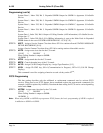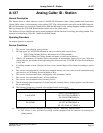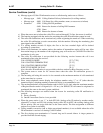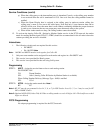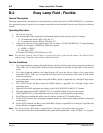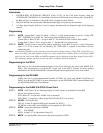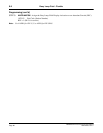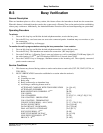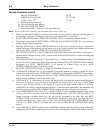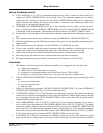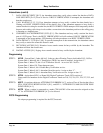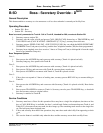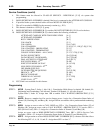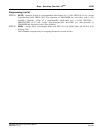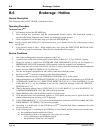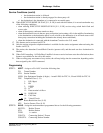
NEAX2400 IPX Feature Programming Manual
Page 82 NDA-24297, Issue 1
B-3 Busy Verification
Service Conditions (cont’d)
PRIVACY RELEASE [P-18]
THREE-WAY CALLING [T-2, T-2D]
VOICE CALL - D
term
[V-2D]
f.) Modem pooling connection
g.) Data Call through Data Adapter
h.) Data Call through Data Module
i.) The calling station is connected to an Attendant Loop
Note: In each of the above instances, the Attendant will receive reorder tone.
3. Before the Attendant is added to an existing connection, a two-burst tone is applied to alert the parties of
the Attendant’s presence. Sending this tone burst can be suppressed by system data.
4. BUSY VERIFICATION and ATTENDANT LOCKOUT [A-5] are mutually exclusive features.
5. This feature can be denied on DICTATION ACCESS [D-3] and PAGING ACCESS [P-1] connections by
assigned System Data Assignment.
6. PAGING ACCESS [P-1]: BUSY VERIFICATION will be denied on a station line that is connected to
paging equipment. If the initiating paging station goes on-hook and is waiting for a callback call from the
paged party, BUSY VERIFICATION will be allowed on that station line.
7. DICTATION ACCESS [D-3]: BUSY VERIFICATION will be denied on a station that is connected to a
dictation trunk. Attempts to busy-verify a station on this connection will result in a reorder tone being sent
to the Attendant.
8. STATION HUNTING (Circular [S-7], Secretarial [S-8], or Terminal [S-9]): If an Attendant attempts to
busy-verify a busy station line in a Hunt Group, the call will hunt. That is, STATION HUNTING will take
precedence over BUSY VERIFICATION. If all stations in a Hunt Group are busy, BUSY
VERIFICATION takes place on the dialed station.
9. The BUSY VERIFICATION feature is assigned to Attendant Consoles only.
10. ATTENDANT LOCKOUT [A-5]: The Attendant is prevented from busy-verifying a station line that is
connected to a loop held on the ATTENDANT CONSOLE [A-3]. Because the LOCKOUT feature applies
only to calls held on the Attendant Console loop, BUSY VERIFICATION of those station lines will be
denied, and the Attendant will hear the reorder tone.
11. CALL BACK [C-1]: When Station A is busy and Station B has activated this feature toward Station A,
and then goes on-hook to wait for Station A to become idle, both stations can be busy-verified. When
Station A goes on-hook and the CALL BACK [C-1] process has begun, neither station can be busy-
verified until the talking connection between Stations A and B has been established. The Attendant will
hear the reorder tone when BUSY VERIFICATION attempts are made during the denied period.
12. CALL FORWARDING (ALL CALLS [C-5], BUSY LINE [C-2]): If an Attendant attempts to busy-verify
a (busy or idle) station line that has the CALL FORWARDING (ALL CALLS [C-5], BUSY LINE [C-2])
feature activated to another station line, the call will be forwarded to the other line, and BUSY
VERIFICATION will proceed as if the Attendant had attempted to busy-verify the other line. If an
Attendant attempts to busy-verify a (busy or idle) station line that has the CALL FORWARDING (ALL
CALLS [C-5], BUSY LINE [C-2]) feature activated to the Attendant, BUSY VERIFICATION will be
denied.
13. CALL HOLD [C-6]: When two stations have established a talking connection, and one of the stations has
a third party on hold, the two talking parties can be verified, but the party on hold cannot be busy-verified.



